22 Interior design trends in 2025 that will elevate your designs
Current interior design trends bring warmth, personality, and comfort into spaces through curved furniture, earthy colors, and natural-inspired layouts that create harmony. Meanwhile, heritage motifs, artisanal objects, and retro details blend with refined finishes to achieve a balanced style. Sustainable materials, multifunctional layouts, and smart technology integration keep designs practical, while biophilic elements connect people with nature and elevate well-being. This article from 3D Maxter highlights 22 interior design trends for 2025 that will inspire professionals in interior, exterior, and architectural projects, providing readers with fresh ideas to apply directly to their work. So, continue reading to discover how these directions can transform design outcomes.

1. Natural earth-tone color palettes
Natural color palettes inspired by earth tones set a calming mood and connect interiors with the outdoors through shades like terracotta, ochre, and sage. These hues create grounding atmospheres that feel comfortable and inviting, and they adapt easily as either the main backdrop or subtle accents that highlight other design features.
Furniture pieces in natural wood finishes, upholstered chairs in muted greens, and woven accessories in sandy neutrals work beautifully to bring this trend to life. Textures like linen, wool, and jute add depth when layered together, and their tactile quality gives richness to the space. You can pair these tones with stone, clay, or rattan to build interiors that feel cohesive, organic, and timeless.
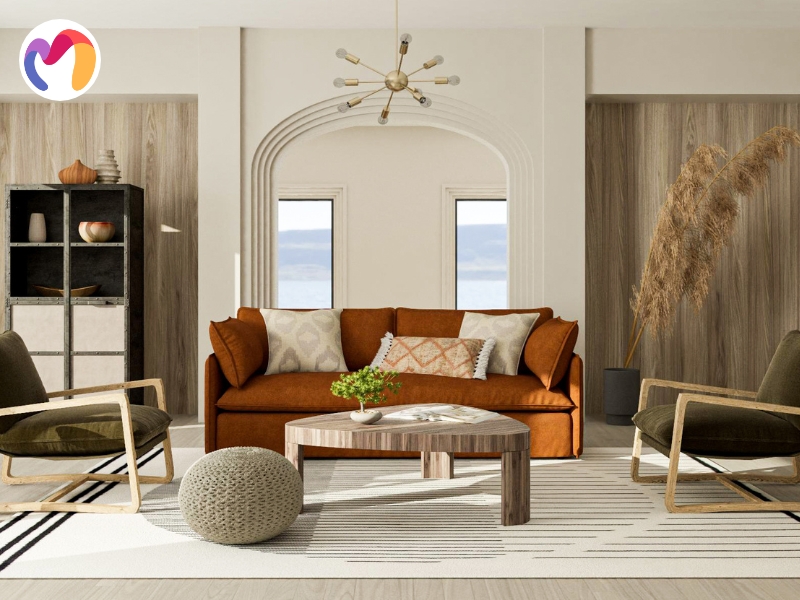
2. Monochromatic bold color schemes
Bold monochromatic color schemes are set to return in 2025, with interiors dominated by a single hue used across walls, furniture, and décor in varying tones. These saturated palettes give rooms a strong personality and create unity, making them perfect for playful spaces or for anyone who wants to make a striking design statement.
Accent chairs, cabinets, and textiles in different shades of the same color reinforce this effect, while subtle neutrals can help soften the intensity. Pastel versions of this approach offer a lighter alternative, striking a balance without compromising impact. Designers who mix lighting and textures with these palettes can create interiors that feel stylish, expressive, and cohesive from floor to ceiling.
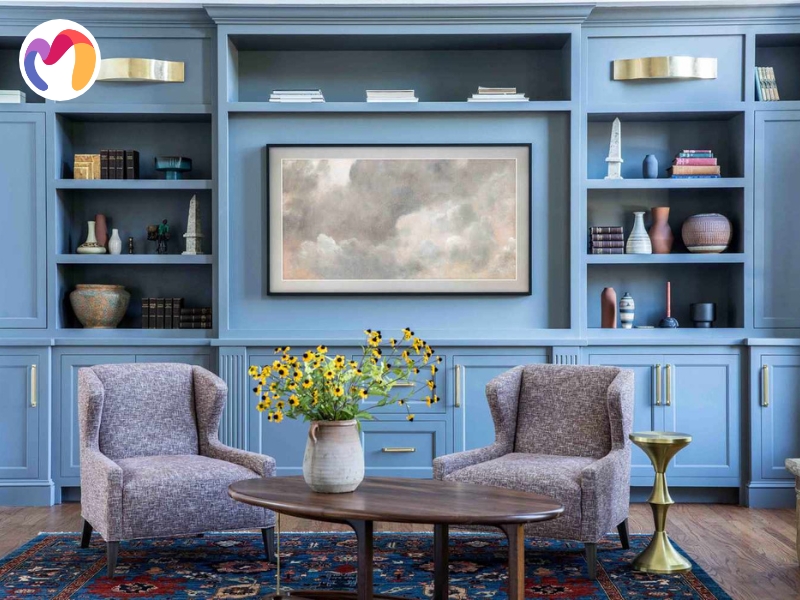

3. Luxury saturated color accents
Luxury saturated accents remain strong in 2025 as jewel tones continue to dominate color palettes with their rich, dramatic presence. Emerald green, sapphire blue, and amethyst purple bring grandeur into interiors and adapt well to both modern and traditional styles, making them a versatile choice for designers who want to add depth and character.
Velvet sofas, statement armchairs, or accent walls in these shades can create focal points that feel indulgent and striking. Neutral backdrops or soft pastels such as butter yellow can tone down the intensity, while metallic finishes in gold or brass enrich the palette even further. This combination produces interiors that radiate sophistication while maintaining balance and harmony.
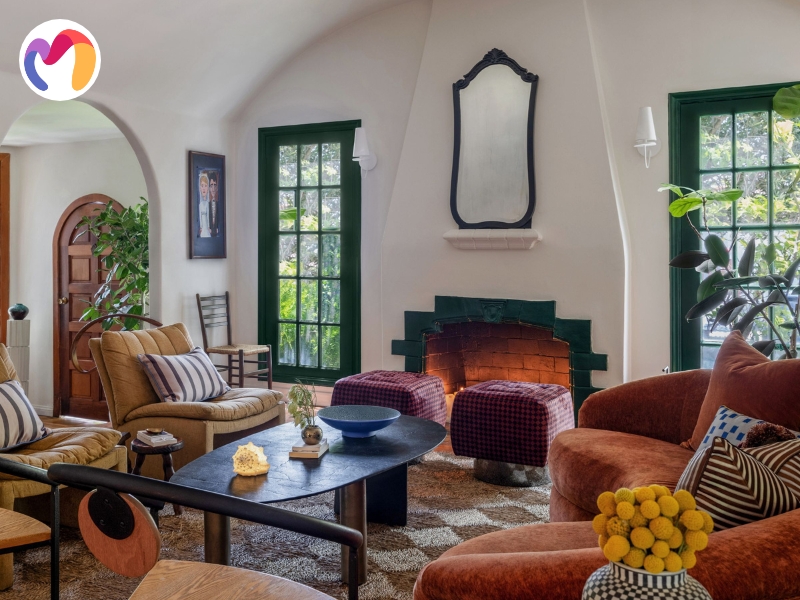

4. Dramatic dark color anchoring
Dark tones step forward in 2025 as black emerges as a grounding element that shapes interiors with bold character. Accents in raven shades, such as through tables, light fixtures, or decorative pieces, add weight to a scheme, while their contrast makes softer colors appear brighter and more dynamic. Designers who enjoy statement-making spaces can even experiment with full monochrome layouts in black for a daring approach.
Mirrors, glass surfaces, and polished metals pair well with these dark features because they reflect light, preventing the room from feeling too heavy. Sofas in deep charcoal, cabinetry in matte black, and art frames in glossy finishes demonstrate the versatility of this palette. The result is a modern aesthetic that feels sleek, striking, and perfectly balanced.
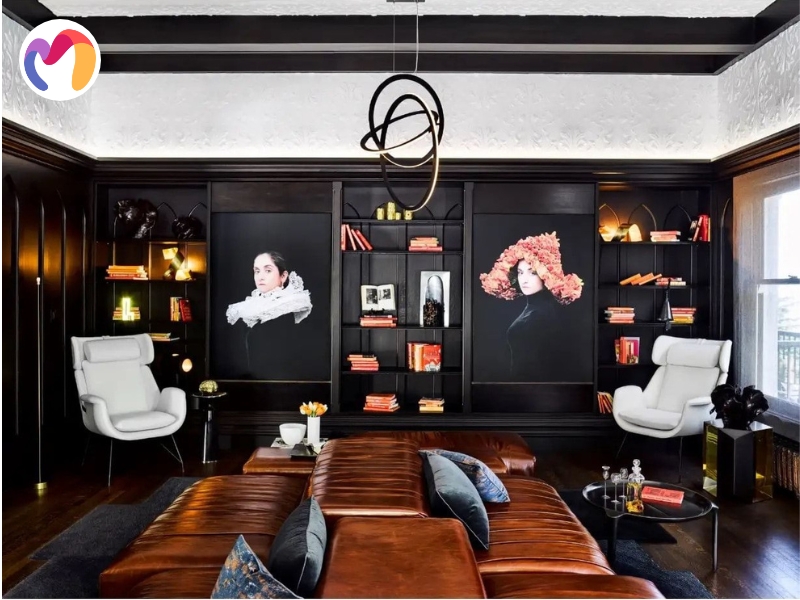

5. Luxurious warm metal finishes
Warm metallic finishes remain a favorite in 2025, as gold, bronze, and copper tones add richness and a sense of luxury to interiors. These hues blend effortlessly with both subtle neutrals and daring color schemes, while silver tones are also resurfacing as a flexible option that adapts to different styles.
Lighting fixtures, cabinet handles, and decorative hardware in warm metals create layers of sophistication and give interiors a polished edge. Designers who mix finishes thoughtfully achieve balance without overwhelming the space, and pairing these accents with textured fabrics or natural wood enhances the overall depth of the design.
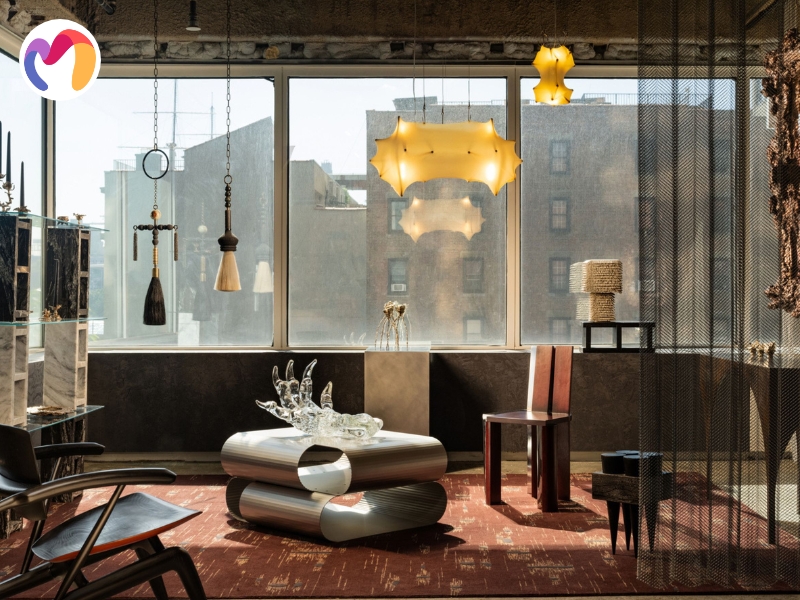

6. Dimensional surface treatments
Dimensional surface treatments gain attention in 2025 as plain walls and ceilings evolve into textured features that shape the room’s ambiance. Wallpapered ceilings, decorative plaster finishes, and wood paneling add character and depth, transforming once-flat surfaces into design statements.
Furniture choices, such as paneled headboards, carved cabinets, or textured wall dividers, extend this look while keeping the space cohesive. Designers who layer materials and repeat patterns across surfaces create interiors that feel dynamic yet balanced, and these tactile elements naturally complement the warmth of other trends, such as metallic accents and natural tones.
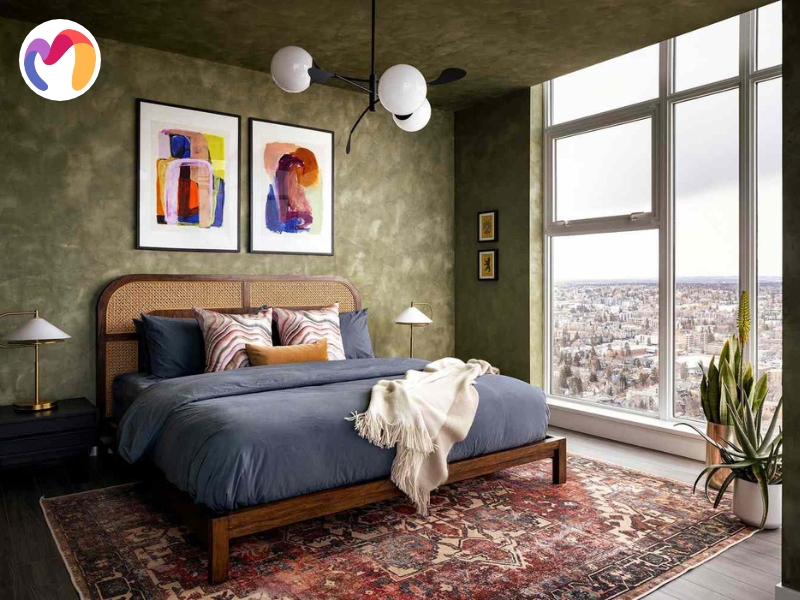

7. Organic stone feature integration
Organic stone features shape interiors in 2025 with their natural textures and enduring elegance. Materials like marble, granite, and slate bring depth and permanence, and their use on countertops, flooring, or accent walls adds both durability and luxury to everyday spaces.
Furniture pieces such as dining tables with stone tops, consoles with marble surfaces, or fireplaces clad in slate strengthen the connection between structure and design. Warm wood finishes pair beautifully with stone to soften the look, and using these elements in high-traffic areas keeps interiors practical while still feeling grounded and sophisticated.
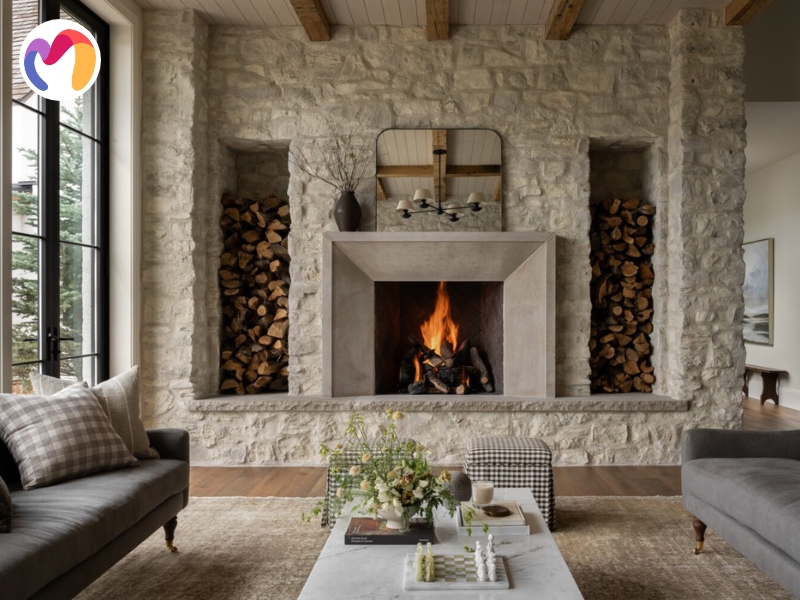

8. Tactile material layering
Tactile layering will define interiors in 2025, as textures become the central focus of design. Exotic stones like marble and quartzite bring richness to kitchens and powder rooms, while small accents such as bowls or side tables crafted from stone add subtle detail. Natural elements, such as branches or fresh flowers, serve as simple touches that refresh a space with warmth and character.
Furniture with linen upholstery, vintage wood pieces, and soft-toned wallcoverings create balance and intimacy when combined. Rugs in wool, cushions in velvet, and ceramics with raw finishes contribute to this layered look, and the mix of fibers, finishes, and surfaces gives every room a sense of depth and intention.
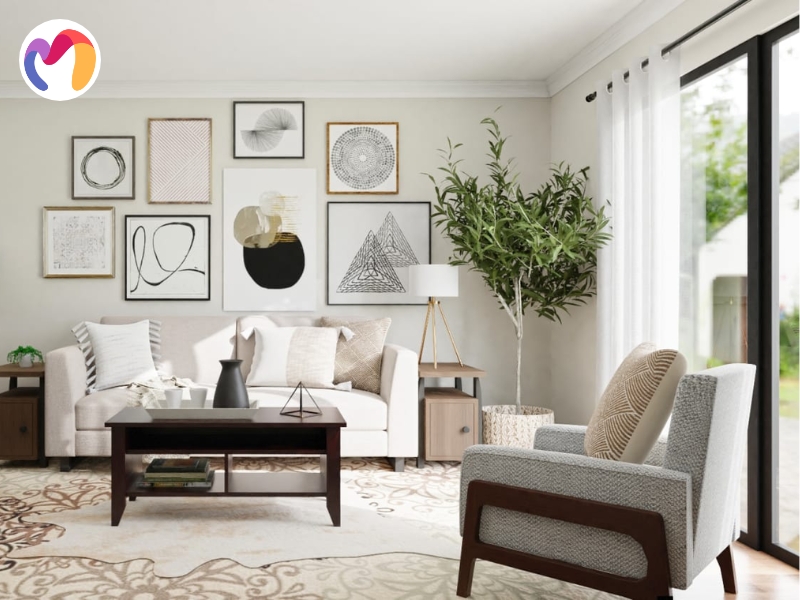

9. Relaxed comfort-first furniture
Relaxed comfort-first furniture defines 2025 interiors with designs that focus on ease while still being visually appealing. Oversized sofas with soft cushions, deep chairs with generous seating, and pieces with rounded edges invite people to linger, creating rooms that feel both functional and stylish.
Slipcovered seating keeps this look casual and practical, as it allows for easy cleaning and flexible styling. Living spaces feel more welcoming when furniture prioritizes comfort, and these pieces blend seamlessly with modern or traditional layouts, making them versatile additions to any home.
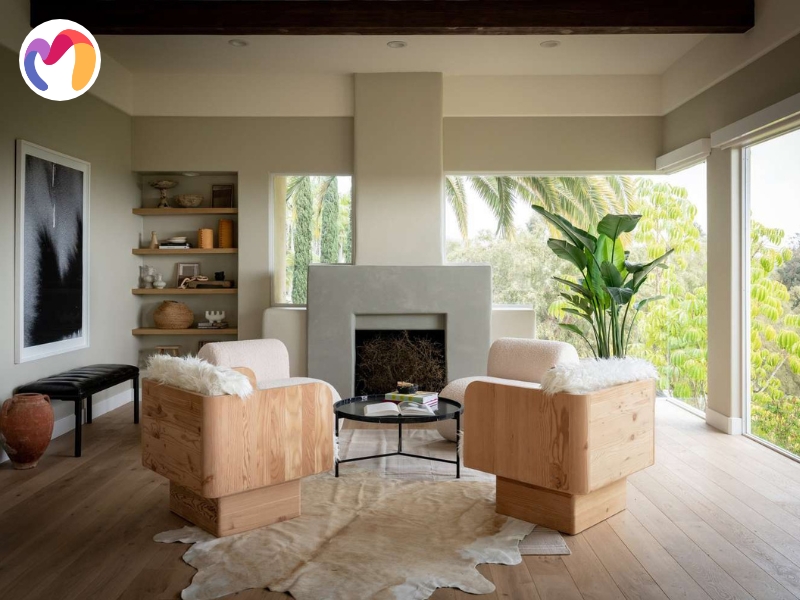

10. Organic shapes with polished metal hardware
Organic shapes with polished metal hardware steer interiors toward a softer and more approachable mood, as furniture moves away from sharp angles. Sectionals with gentle bends and chairs with flowing curves create a sense of ease, while their inviting forms balance well in both contemporary and classic spaces.
Polished nickel hardware replaces brass as a favored accent because its cool luster adds refinement without overwhelming natural textures. Consoles with stone tops paired with nickel fronts, bathroom fixtures with a silvery glow, and cabinets with gleaming handles demonstrate how this mix of shape and finish can create interiors that feel both updated and timeless.
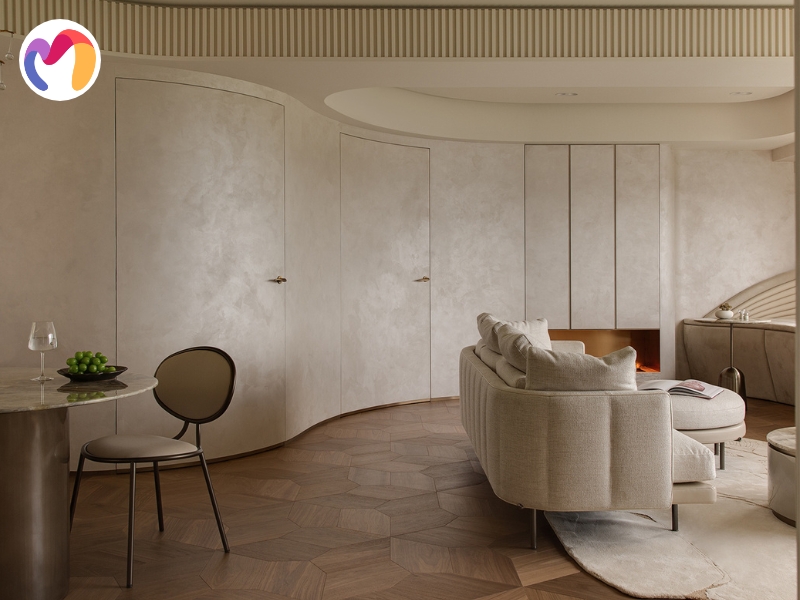

11. Authentic vintage furniture revival
Authentic vintage furniture revival brings history back into modern spaces by celebrating retro design with a fresh approach. Bold patterns, mid-century chairs, and nostalgic accessories add character while still blending seamlessly with present-day layouts.
Thrift shops and antique markets offer one-of-a-kind finds, from wooden dressers with aged finishes to lighting fixtures with vintage flair, which add a sense of story to interiors. Old and new pieces work best when layered together, so mixing a sleek sofa with a retro coffee table or pairing modern shelving with a vintage cabinet creates homes that feel distinctive and personal.
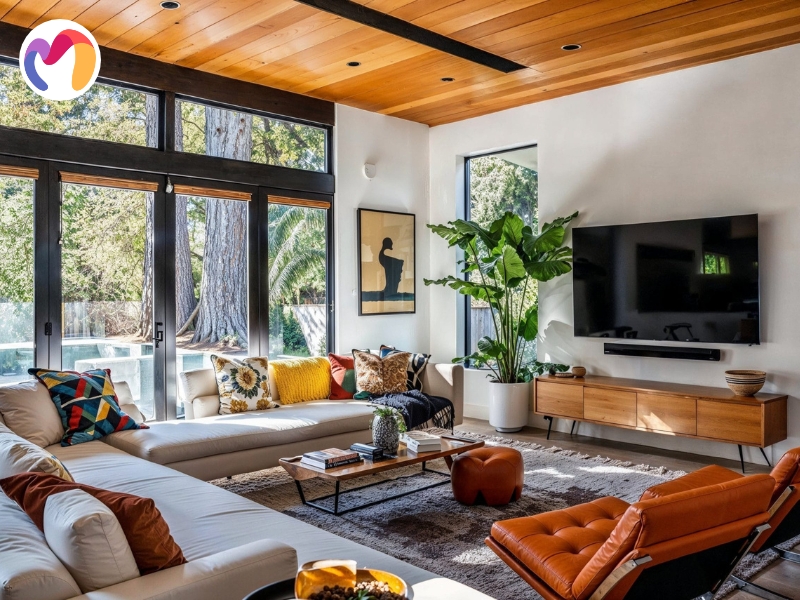

12. Local artisan-made elements
Local artisan-made elements shift interiors away from uniform mass production and toward pieces that carry a human touch. Handmade ceramics, woven textiles, and custom wooden furniture introduce individuality, while their textures and imperfections add warmth to even the most polished rooms.
Statement items like a hand-carved dining table or a set of ceramic vases anchor spaces, and smaller accents can layer personality without overwhelming. Combining crafted pieces with standard furniture highlights their uniqueness, and supporting local makers brings authenticity to the home while also encouraging sustainable practices.


13. Repurposed architectural elements
Repurposed architectural elements give interiors depth by merging history with modern living. Old doors, beams, and ironwork find fresh purpose as furniture or accents, while their weathered textures bring character that new pieces cannot match. Reclaimed wood can be used to form feature walls or dining tables, and stone salvaged from older building projects works beautifully as countertops or mantels.
Designers often utilize these materials to minimize waste while creating one-of-a-kind spaces, and the contrast between aged finishes and sleek, modern lines makes rooms feel both grounded and contemporary. Mixing salvaged architectural details with clean-lined furnishings strikes a balance that preserves heritage while keeping the design relevant.
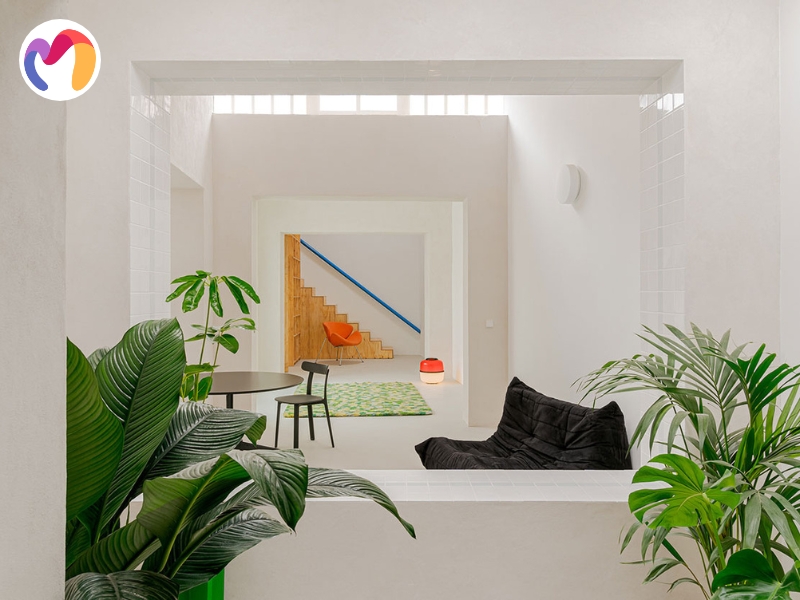

14. Cozy minimalism with natural elements
Cozy minimalism with natural elements continues to influence Scandinavian and Japandi design, but in 2025, it focuses more on comfort without compromising simplicity. Neutral palettes, combined with wood finishes, stone accents, and soft fabrics, create rooms that feel grounded while remaining uncluttered.
Warm textures from textiles like linen throws or wool rugs balance the clean lines of minimalist furniture, while bamboo tables or rattan chairs bring a calming, natural touch. Cushions in soft tones, low lighting, and carefully chosen accessories give interiors a welcoming mood, making this style both practical and soothing for everyday living.


15. Layered abundance design
Layered abundance design embodies maximalism by celebrating color, texture, and pattern in a way that feels vibrant and full of life. Bold wallpapers, patterned rugs, and richly upholstered furniture come together to create rooms that feel expressive and memorable.
Neutral bases, such as cream walls or wooden floors, provide balance, while layers of striking pieces, including velvet sofas, patterned cushions, and ornate lighting, add energy without overwhelming the space. Key items, such as a statement bed frame or an oversized armchair, act as anchors, while every added detail builds a room that feels collected and thoughtfully arranged.
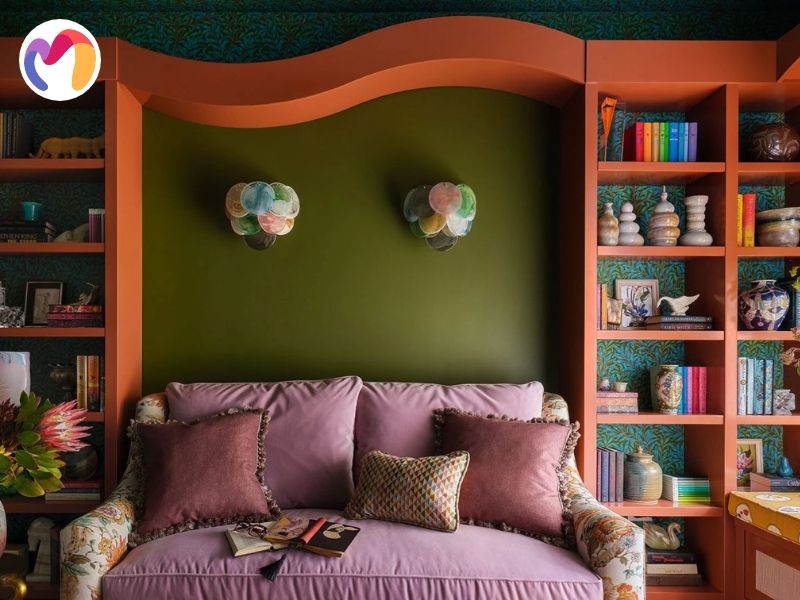

16. Coordinated pattern combinations
Coordinated pattern combinations bring energy into interiors by mixing stripes, florals, and geometrics in a balanced way. Color schemes act as the unifying thread, allowing different motifs to coexist without creating visual clutter. Large patterns on rugs or curtains set the tone, while smaller designs on cushions or throws add layers of interest.
Furniture pieces, such as upholstered chairs with bold prints, work well when paired with subtle patterned accessories, and a limited palette of three or four shades keeps everything cohesive. Careful layering transforms a space into a cohesive design narrative, demonstrating that variety can feel harmonious when guided by thoughtful choices.


17. Multi-sensory design experiences
Multi-sensory design experiences shape interiors in 2025 by appealing to sight, touch, sound, and even scent. Textured rugs, layered fabrics, and natural finishes give depth, while soft lighting sets the tone for different moods throughout the day.
Aromatic candles or diffusers with essential oils add fragrance, and background music played through discreet speakers completes the sensory mix. Furniture with tactile materials such as boucle chairs or linen sofas strengthens the feeling of comfort, and together these elements create spaces that feel immersive, soothing, and memorable.
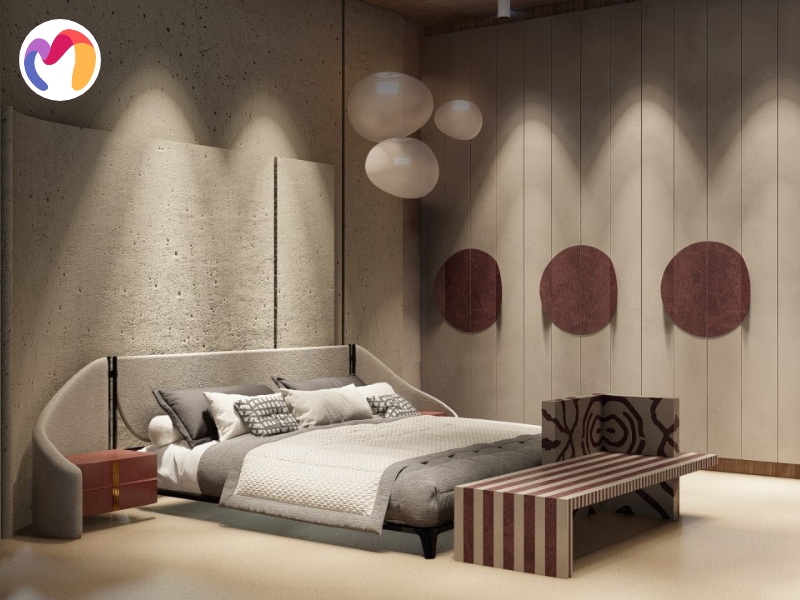

18. Eco-conscious material selection
Eco-conscious material selection keeps sustainability at the center of design in 2025, as spaces are expected to look good while protecting the planet. Vegan leather, low-toxicity fabrics, and recycled finishes lend interiors both beauty and responsibility, while reusable pieces reduce waste.
Furniture built with bamboo, reclaimed wood, or metal frames remains durable for years, reducing the need for frequent replacements. Designers who choose eco-friendly products not only save resources but also create interiors that reflect long-term value and care.
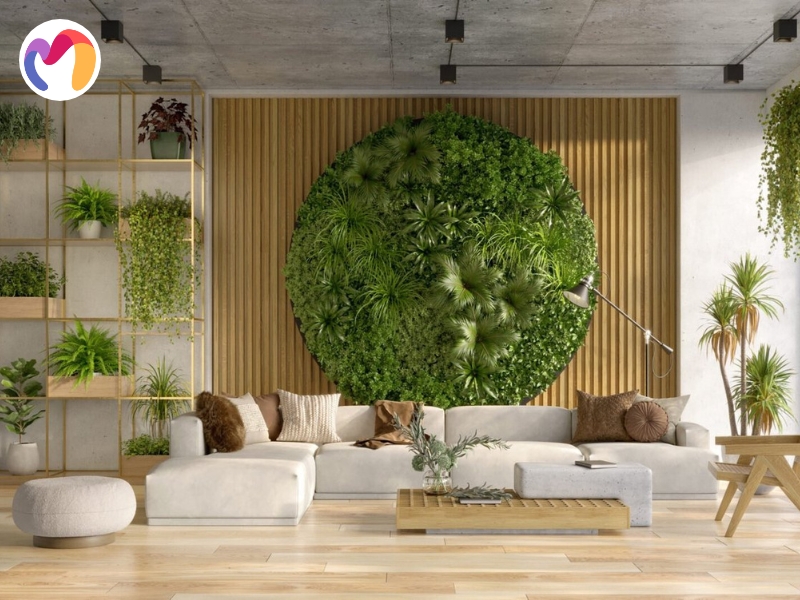

19. Hidden smart home technology
In 2025, hidden smart home technology makes interiors feel both modern and seamless, as gadgets blend into the background instead of standing out. Speakers built into walls, wireless charging tables, and voice-activated lighting systems allow convenience without disrupting the design.
Furniture that integrates technology offers dual benefits, as pieces like smart coffee tables or beds with built-in controls reduce clutter while maintaining style. Designers who apply this trend create spaces that feel connected yet uncluttered, linking technology with aesthetics in a balanced way.
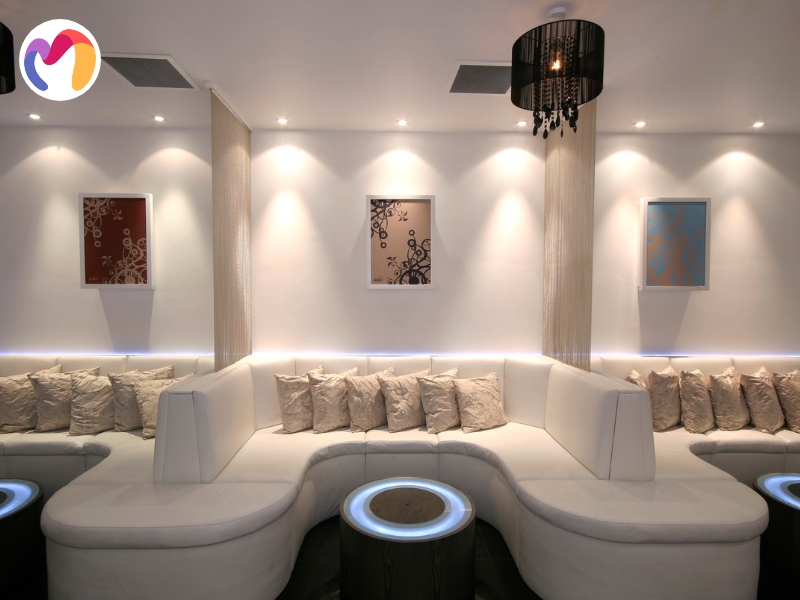

20. Sculptural illumination design
Sculptural illumination design transforms lighting from a functional element into a striking centerpiece in 2025, as fixtures act as art pieces while brightening spaces. Oversized pendants, sculpted floor lamps, and geometric chandeliers provide both style and light, allowing rooms to feel dynamic and expressive.
Layered lighting enhances visual interest, as dimmable options and accent lights allow designers to control the mood throughout the day. Tables, consoles, or shelving units paired with integrated lights highlight architectural features and focal points, creating a balanced interplay between illumination and furniture.
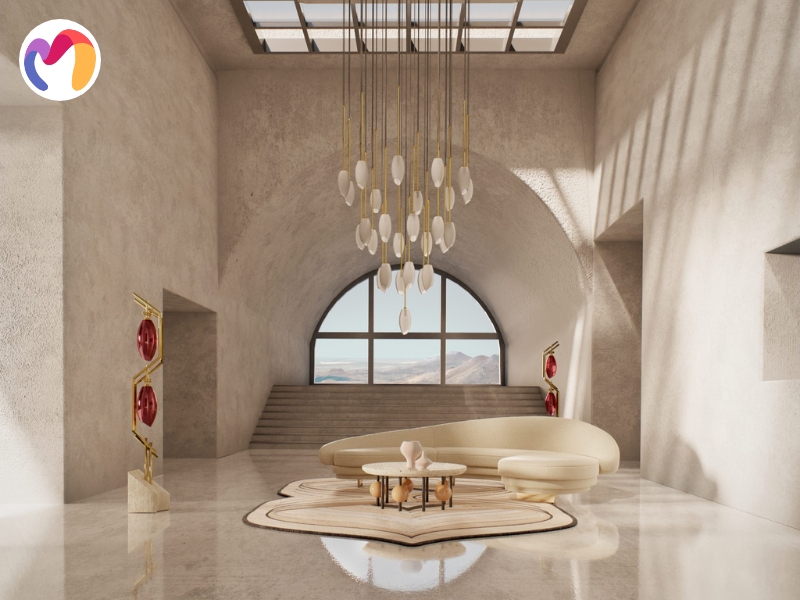

21. Dedicated health-focused spaces
Dedicated health-focused spaces respond to the growing demand for wellness-centered homes in 2025, offering areas specifically designed for relaxation and physical activity. Meditation rooms, small yoga studios, and spa-inspired bathrooms create environments that nurture both mind and body.
Natural light, indoor plants, and calming colors enhance these spaces, while comfortable mats, ergonomic chairs, and soft furnishings support daily routines. Combining a home gym with a cozy reading nook or lounge chair promotes balance, and strategically placed greenery adds freshness and a restorative atmosphere. These thoughtful touches turn functional areas into sanctuaries that prioritize well-being and encourage healthy living.
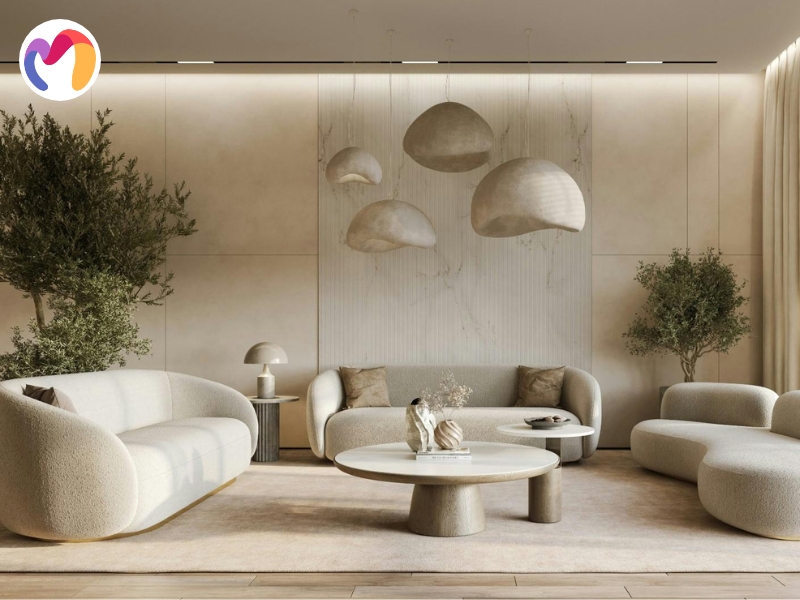

22. Seamless indoor-outdoor living
Seamless indoor-outdoor living brings a natural flow between your home’s interior and exterior, making both spaces feel expansive and inviting. Outdoor kitchens, comfortable lounges, and weather-resistant furniture create areas that are as functional and stylish as indoor rooms.
Retractable glass doors, pergolas, and coordinated flooring help unify the spaces, while potted plants and outdoor rugs extend the warmth and comfort of the indoors. Layered seating with durable cushions and side tables ensures usability, and subtle lighting adds ambiance for evening gatherings. These design choices transform patios, terraces, and balconies into extensions of your living area, enhancing both relaxation and social interaction.
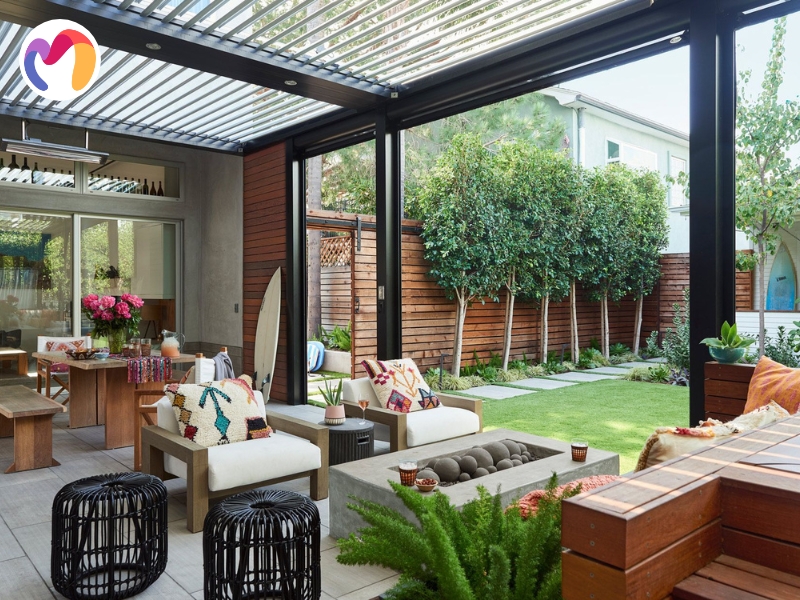

This article presents interior design trends for 2025, featuring multi-sensory experiences, eco-conscious materials, hidden smart technology, sculptural lighting, health-focused spaces, and seamless indoor-outdoor living. It offers practical tips on furniture, decor, and layouts to create stylish and functional spaces. 3DMaxter supports these trends with high-quality 3D models for interior, exterior, and architectural projects in 3ds Max format (.max), and exports in .obj and .fbx formats, compatible with most 3D software. This allows designers to download free and premium assets to craft interiors that reflect current trends. Download models from 3DMaxter today to elevate your designs and stay ahead.
3DMAXTER LTD
- Email: [email protected]
- Phone: +1 (929) 450-2898
- Address: 95-38 Queens Blvd, Rego Park, NY 11374, USA